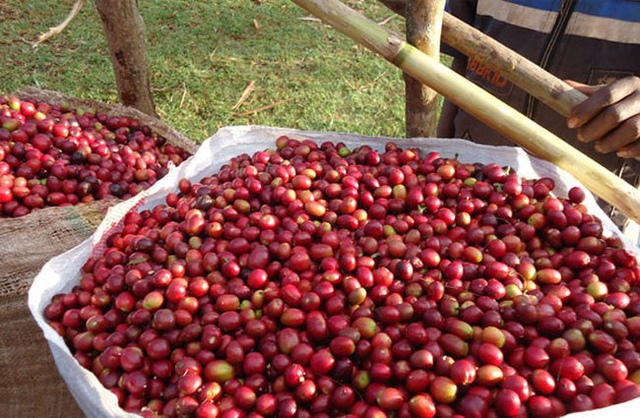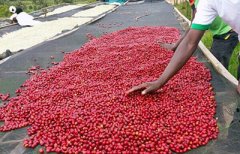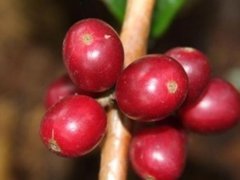What's the difference between white cherry coffee and red cherry coffee? how does red cherry coffee taste?

For professional baristas, please follow the coffee workshop (Wechat official account cafe_style)
In 2007, Trabocca Dutch traders launched the Red Cherry Project, which is purely designed to encourage coffee farmers to produce the best quality coffee in water, half-water, sun and half-sun treatments, and to reward and reward these farmers for their efforts. Trabocca will also invite selected farmers or producers to participate in the program before the growing season to produce micro-batches of coffee (about 1500 to 3000 kg) and carefully pick 100% ripe red coffee cherries by hand (hence the name Red Cherry Project).
Trabocca provides financial loan support, new hardware equipment and production processing knowledge and technology to assist farmers, promising to buy at a good price as long as the quality of the actual output meets the cup test standards in the Addis Ababa Cup in Ethiopia and the Amsterdam Cup in the Netherlands. The passing standard set by the Trabocca is 88.
The coffee beans of the Red Cherry Project are packed in plastic inner bags (GrainPro bags) or vacuum boxes immediately after the processing of the origin is completed, and then shipped to Djibouti for shipping. Strive for perfect quality through immediate monitoring, safe transportation and timely and appropriate handling. And because of this red cherry program, the roasters can buy high-quality coffee beans, improve the quality of Ethiopian coffee, have better prices, and Trabocca can return profits to farmers, and the quality can continue to improve. The Rico Water treatment Plant receives hundreds of samples every year in its Trabocca office in Amsterdam. During a blind coffee test in December 2013, Trabocca found that this water washing Yega Chefe from the Rico treatment plant has unique aromas of peach, mango and drupe.
Li Tan opened a washing plant in Kochere, Yega Xuefei, in 2011, at an altitude of about 1850-2100 meters. During the production season from the end of October to mid-January every year, about 850 coffee farmers hand over their coffee to Rico for processing. The treatment process first uses the water from the river near the Li Ke treatment plant for cleaning, and uses the old-fashioned Aegrd machine to remove the pericarp, and the pectin part is removed by traditional fermentation. depending on the climate, it takes about 36-48 hours, and finally the coffee beans will be placed on the bedstead to dry for 10-12 days, resulting in an elegant, exquisite and sunny Yega Xuefei.
Flavor: rich aromas of ripe peach / papaya / cantaloupe / blueberry
Important Notice :
前街咖啡 FrontStreet Coffee has moved to new addredd:
FrontStreet Coffee Address: 315,Donghua East Road,GuangZhou
Tel:020 38364473
- Prev

What is the Red Cherry Project? Red Cherry Project Red Cherry Coffee has a cherry flavor!
Professional barista communication please follow the coffee workshop (Wechat official account cafe_style) what is the Red Cherry Project? Recently, you will see the xx Red Cherry Project in many coffee menu. Xx red cherry in the sun. Xx red cherry washing and so on often guests will ask me xx red cherry is there red cherry in coffee? Some people even claimed that the red cherry coffee he drank really tasted cherry.
- Next

Ethiopian Red Cherry Project (Operation Cherry Red) Red Cherry Coffee Curve
Professional baristas Please follow the Coffee Workshop (Wechat official account cafe_style) is an EU project proposed by the Dutch government to encourage Ethiopian coffee farmers to produce better quality coffee beans and surprise roasters. Origin: led by the Dutch Trabocca BV Trading Company (partially sponsored by the Dutch government), providing financial loan support, new
Related
- Does Rose Summer choose Blue, Green or Red? Detailed explanation of Rose Summer Coffee plots and Classification in Panamanian Jade Manor
- What is the difference between the origin, producing area, processing plant, cooperative and manor of coffee beans?
- How fine does the espresso powder fit? how to grind the espresso?
- Sca coffee roasting degree color card coffee roasting degree 8 roasting color values what do you mean?
- The practice of lattes: how to make lattes at home
- Introduction to Indonesian Fine Coffee beans-- Java Coffee producing area of Indonesian Arabica Coffee
- How much will the flavor of light and medium roasted rose summer be expressed? What baking level is rose summer suitable for?
- Introduction to the characteristics of washing, sun-drying or wet-planing coffee commonly used in Mantenin, Indonesia
- Price characteristics of Arabica Coffee Bean Starbucks introduction to Manning Coffee Bean Taste producing area Variety Manor
- What is the authentic Yega flavor? What are the flavor characteristics of the really excellent Yejasuffi coffee beans?

